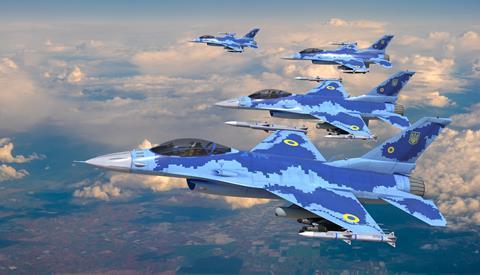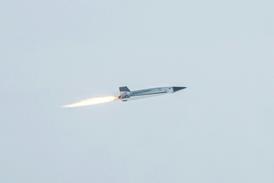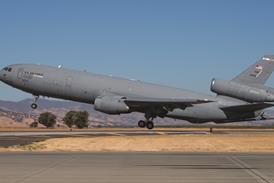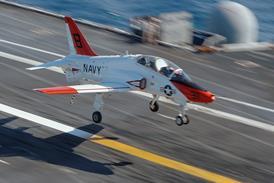A US Air Force leader says that Ukraine’s receipt of Lockheed Martin F-16s is an important step in its fight against Russia but warns that it will not lead immediately to air superiority.
“[It’s] not going to be the golden bullet that all of a sudden they have F-16s and now they’re going to go out and gain air superiority,” says General James Hecker, commander of US Air Forces in Europe (USAFE).

He says that Ukraine’s F-16s will confront a formidable Russian integrated air defence system.
“We have a hard time with fifth-generation aircraft going against that, but it does move them a step in the right direction.”
Hecker made the remarks on the Mitchell Institute’s Aerospace Nation podcast, where he spoke on a range of air force issues.
Much has been made of the imminent arrival of donated F-16s in Ukraine, but the status of the type’s arrival is not clear. The secrecy all but certainly stems from concerns about operational security.
Hecker’s comments coincided with a Wall Street Journal report, citing a government source, about the US government’s decision to supply Ukraine with “American-made missiles and other advanced weapons” to equip the new fighters, which are being donated by Belgium, Denmark, the Netherlands and Norway.
The report adds that the weapons will be supplied in the volumes necessary to support Ukrainian needs.
Hecker observes that Ukraine has already used American weapons such as the AGM-88 High Speed Anti-Radiation Missile from Russian-built fighters. American-built weapons, however, can be more effectively employed from the F-16.
“They already have [US air-launched munitions], they’re just dropping them off [RAC] MiG-29s and [Sukhoi] Su-24s and those kinds of things,” says Hecker.
“Now they’re going to have the opportunity to actually drop them off of an airplane that they were designed to come off of, which will give them more capability to change the targets in flight and things like that, which they’re not able to do with their other aircraft. That’s going to increase the capability.”
Hecker adds that not only pilots have received training, but also maintainers. Without offering details, he suggests that the maintenance of the F-16s figures prominently in western planning for the type’s use by Kyiv.
He also touched on Russia’s failure to gain air superiority. In his view, if Russia had air superiority it would be able to put up combat air patrols along Ukraine’s western borders, allowing the interdiction of supplies flowing across the frontier from Poland and Romania.
“But they don’t have air superiority, so they can’t do it,” says Hecker.
“So what they have to do is similar to Ukraine, coming in at low altitudes, getting below the radars, popping up, dropping off a glide bomb and then exiting. That’s the kind of tactics that both sides have resorted to just because of the advanced integrated air and missile defence systems on both sides.”


























